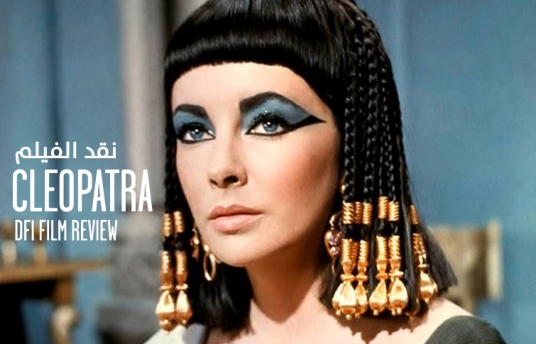DFI Film Review: Cleopatra (1963)
Apr 04, 2011

Written by James Rawson, New Media, DFI
Film: Cleopatra
Year: 1963
Director: Joseph L. Mankiewicz
Genre: Biography, Drama, History
Cast: Elizabeth Taylor, Richard Burton, Rex Harrison, Martin Landau
If there was ever an example of a film’s production overshadowing the final product, then Joseph L. Mankiewicz’s 1963 ‘Cleopatra’ is surely it. Originally budgeted at 2 million US dollars, it ended up costing Fox Studios 46 million US dollars (which, adjusted for inflation, makes it the third most expensive production of all time). Initially the sets were all built in London, only to be scrapped and rebuilt in Rome due to lead actress Elizabeth Taylor’s health (she insisted she couldn’t work in the English weather); the leading roles were cast and recast multiple times due to enormous changes in the filming schedule and, by the time the producers had already spent 7 million US dollars, there was not one second of usable footage.
I could go on – the absurd statistics surrounding the filming of ‘Cleopatra’ seem to be never ending, and have entered Hollywood legend. But while film fans may be familiar with these nightmare production stories, it seems that many of the younger generation (including myself, until this week) have not seen the actual picture itself. As Taylor recently passed away, it seems like the perfect time to look back at what may be her most famous role.
Running at just over 4 hours (cut down from the director’s original 6 hours), ‘Cleopatra’ is essentially two movies. The first begins with Caesar (Rex Harrison) arriving on the shores of Alexandria, ready to marry Cleopatra (Elizabeth Taylor), and in doing so create a union between the Egyptian and Roman empires. After Caesar meets a grizzly end, in steps his right hand man, Marc Antony (Richard Burton), to steal Cleopatra’s heart. Together Marc Antony and Cleopatra attempt to take on Octavian, who has taken control of the Roman Empire, in the hope of ruling together.
The first thing to note about ‘Cleopatra’ is that, despite much of the film’s money being utterly wasted, some of it did work its way on to the screen, and the set design and costumes are simply staggering. In fact, staggering is probably the best way to describe Elizabeth Taylor as she tries to balance beneath one of her many elaborate headdresses. In a world of green screen, we will probably never see film sets like this again – vast, golden, bejewelled temples and whole fleets of ships built for enormous scenes at sea. They really are a sight to behold: reeking of money, but at the same time always feeling a little false and tacky.
video#1
The human drama of the film, however, is considerably less dazzling. With so many directors and writers attached to the project, if there ever was a great script in this production, then it was certainly lost along the way. There is far too much clumsy, overlong dialogue, and Taylor just doesn’t have the conviction to make the role, or the film, work.
In a way, however, I would still recommend watching Cleopatra, as it reveals so much about the excess, arrogance and ridiculousness of old school Hollywood. They don’t make flops like this anymore, they really don’t. And as it looks like Angelina Jolie is set to star in a remake (no, Hollywood still hasn’t cottoned on to the idea that maybe they could cast an Arab actress in the role), here’s hoping they manage to keep this one within budget.